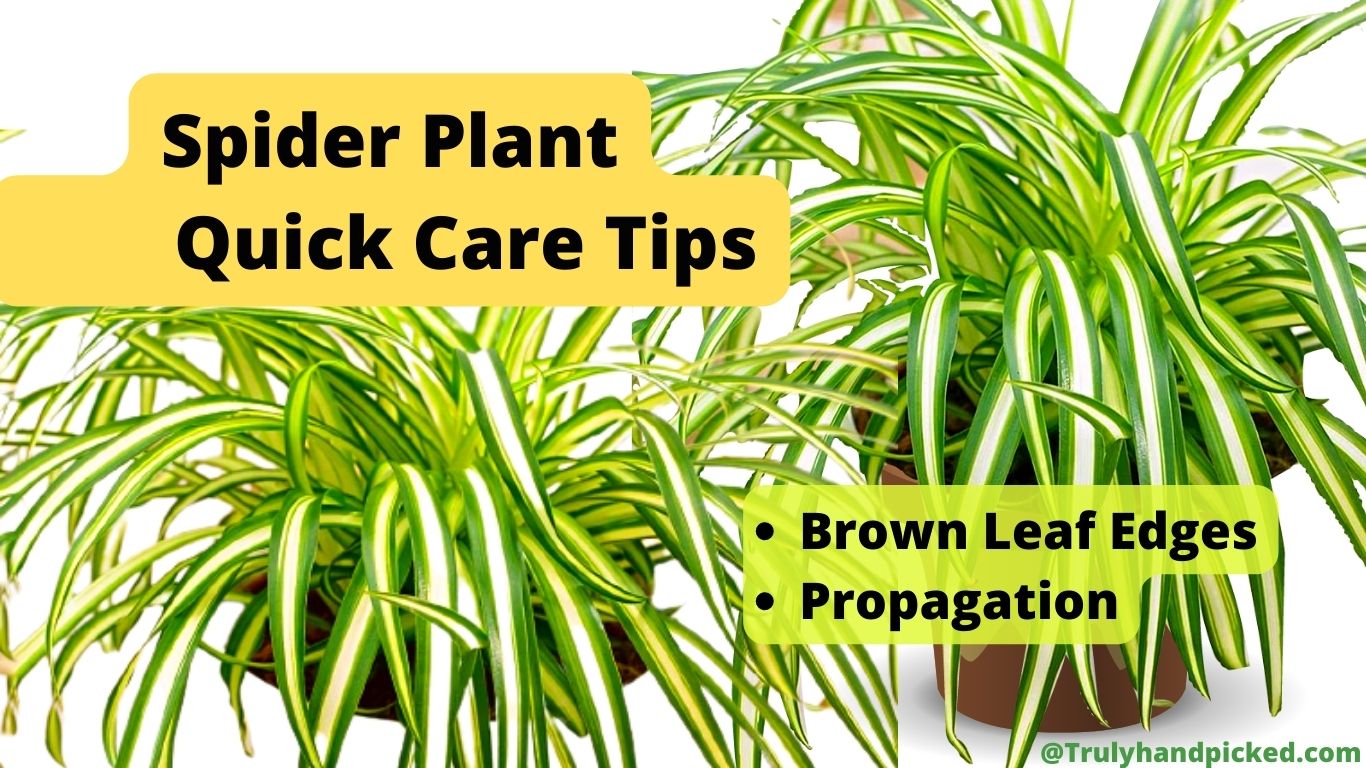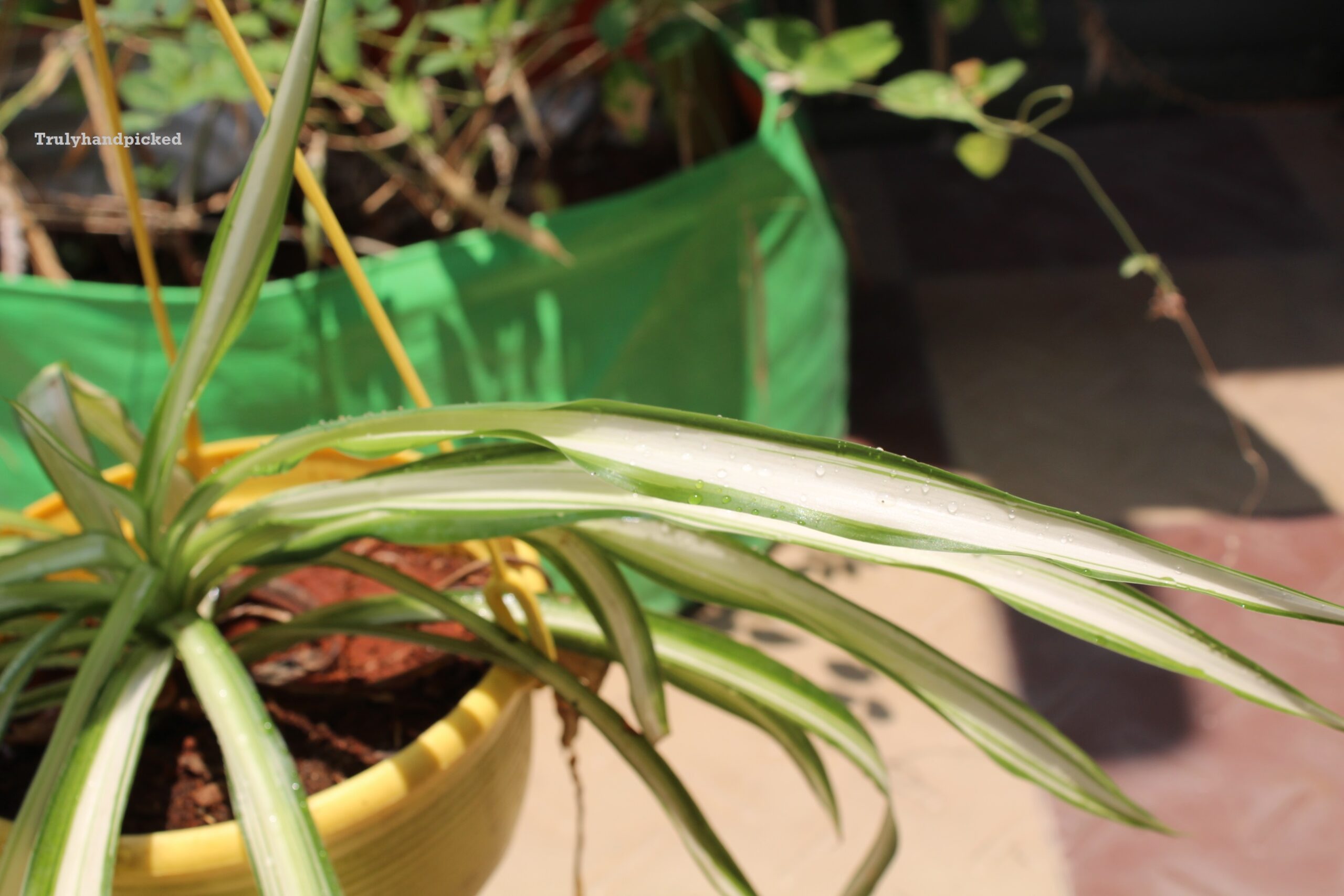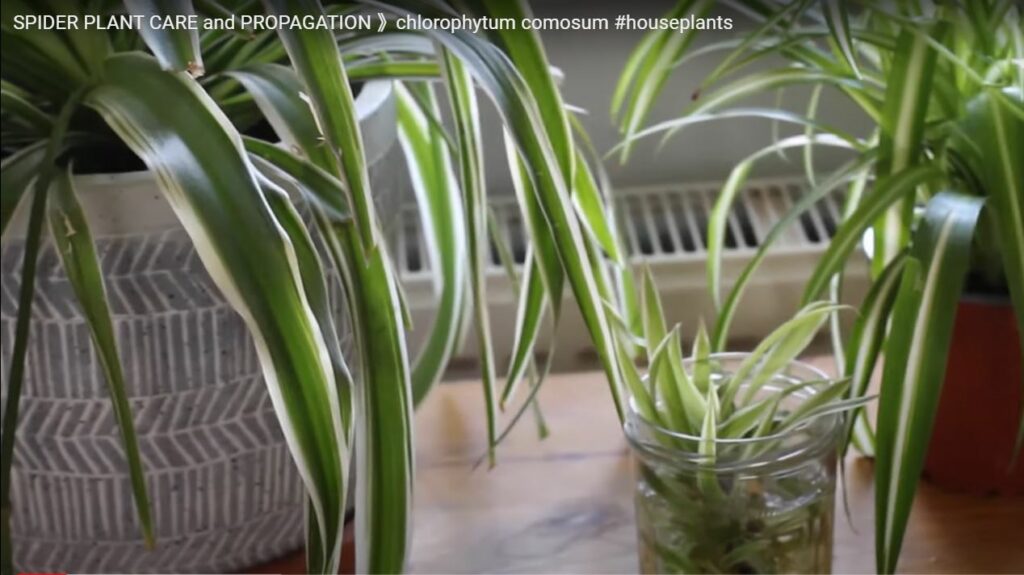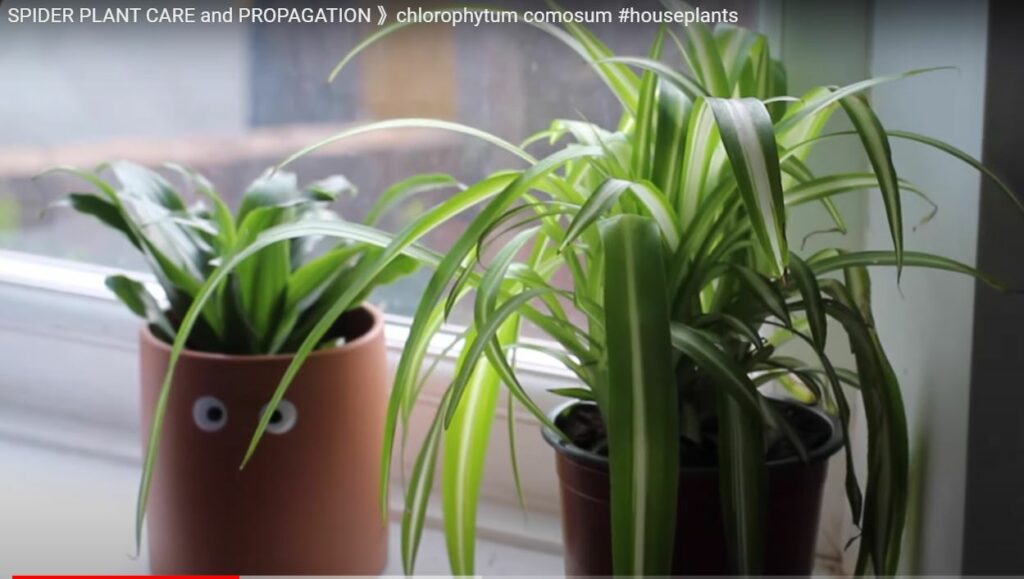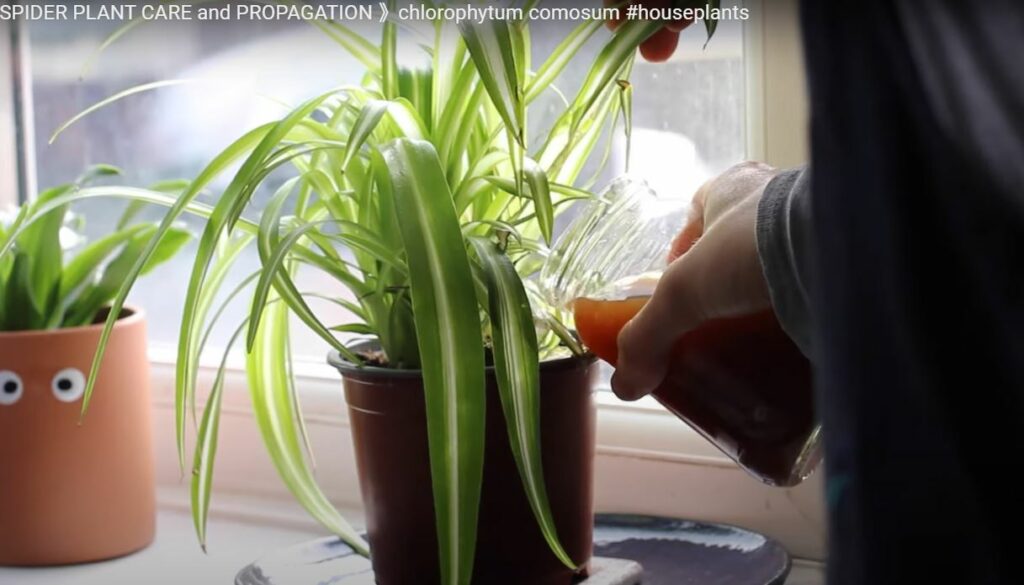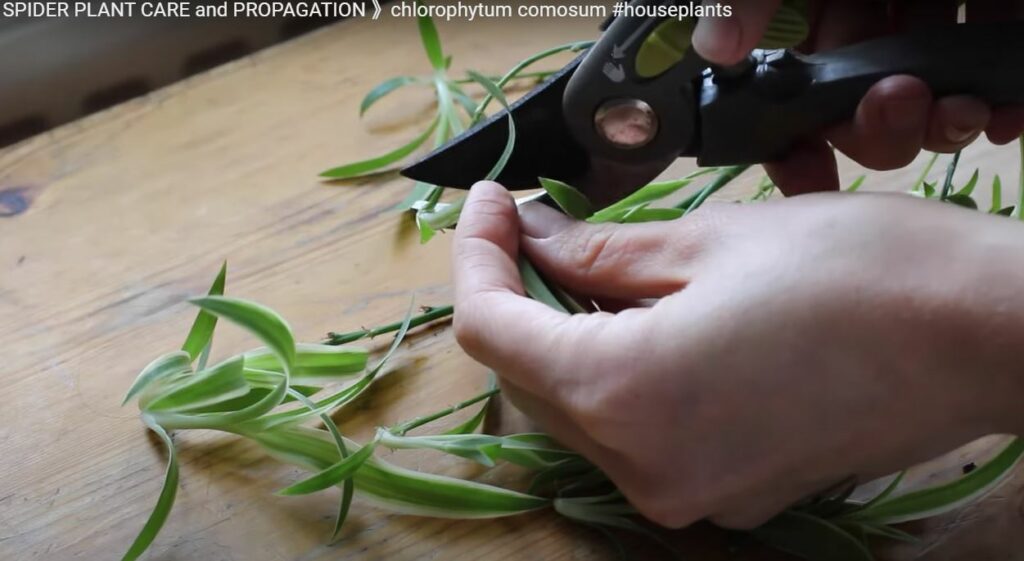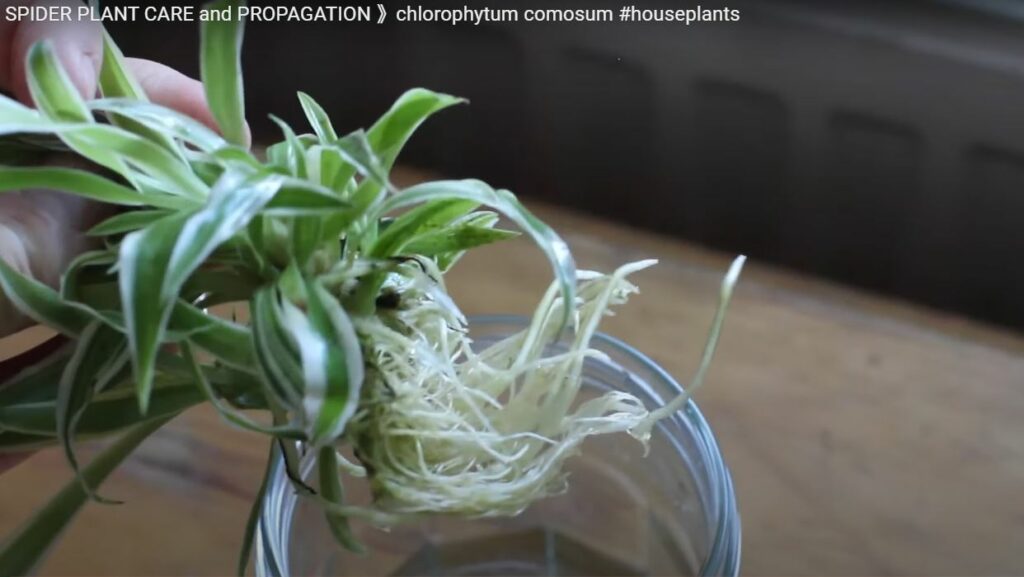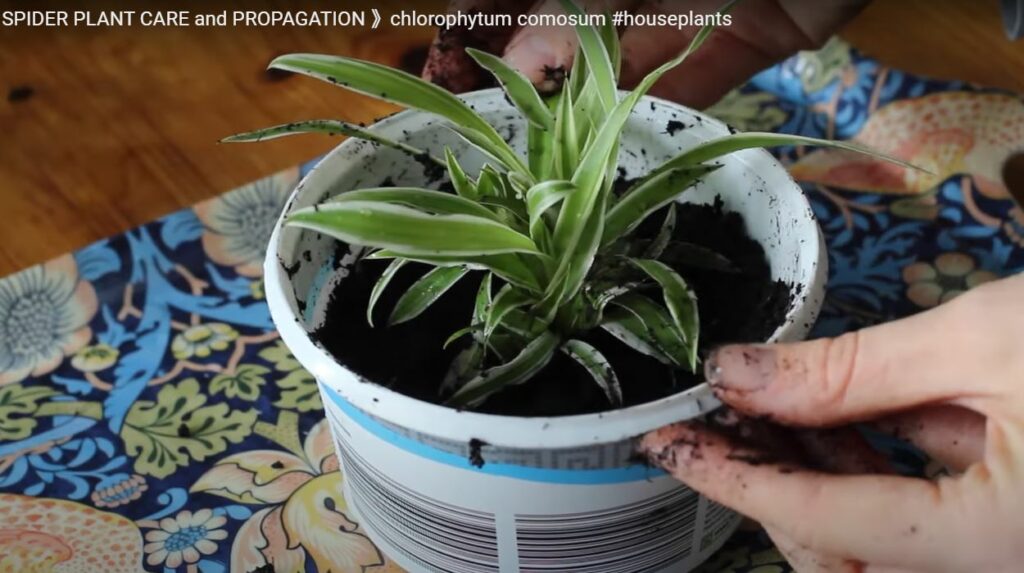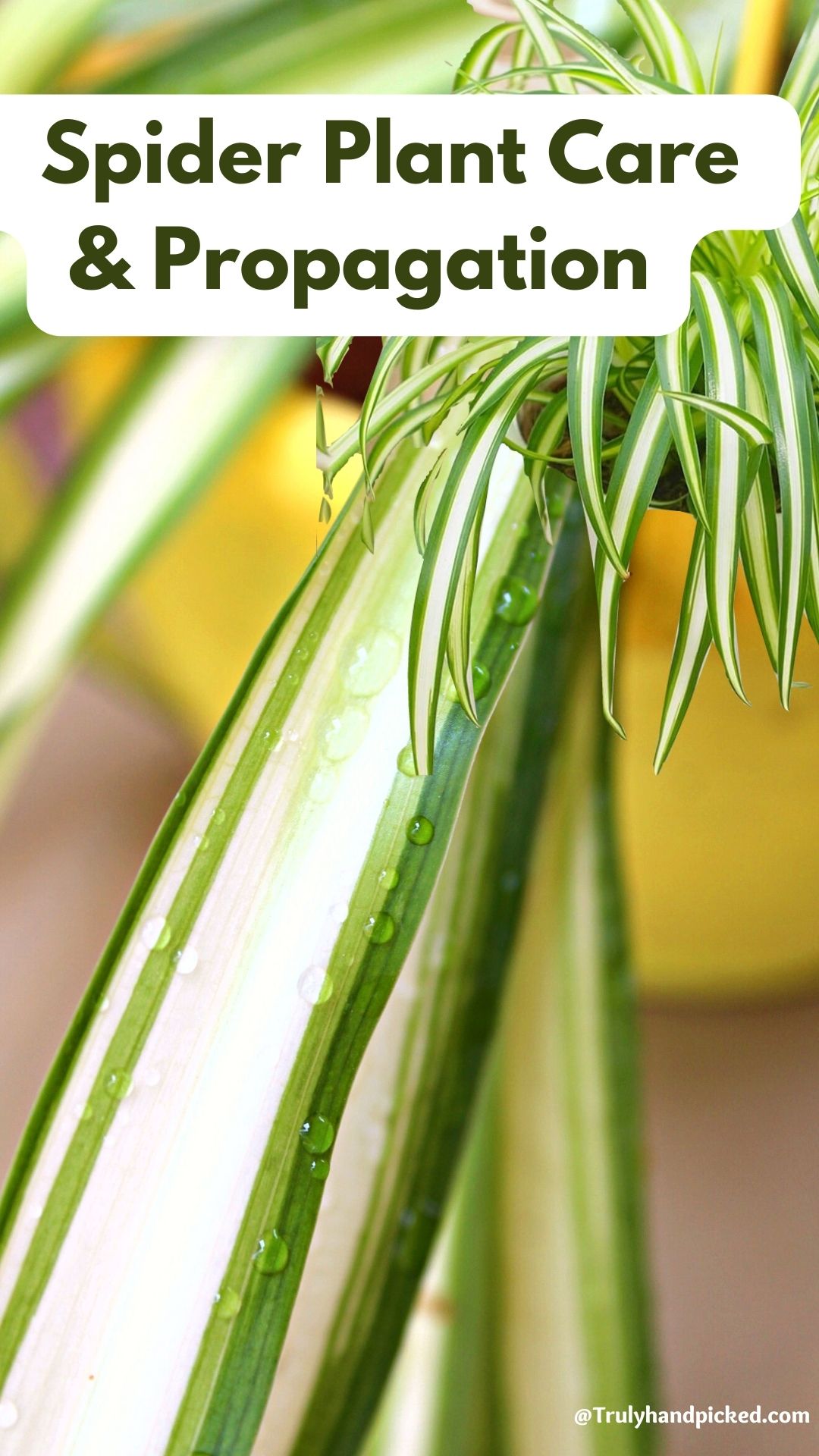Brown leaf edges of spider plants: It mainly occurs when it’s under harsh or direct sun, underwatered, overwatered, aging, and producing baby spider plants.
It’s okay and good to trim off the brown parts of your spider plants for the plant to focus its energy where needed.
Move to an ample airy place with full-day indirect bright light and water occasionally to keep the soil moist but not soggy. These steps will revive your plant help browning leaf tips.
Spider plant is an evergreen perennial flowering houseplant that resembles super classy when placed in a room. Some houseplants are popular for containing both qualities of growing beautiful foliage and exciting flowers together.
Spider plant is one of those kinds. Its actual name is chlorophytum comosum, but known by plenty of other names like spider ivy, ribbon plant, hen, etc. including spider plant.
This is an easy-to-care houseplant that requires only some basic cultivation needs to thrive. Here are some must-know facts about this exotic houseplant along with a complete guide on how to grow a spider plant indoors –
Growing Care of Spider Plant: Quick Overview
Soil: Spider plant wants slightly acidic, loamy, moist, and well-drained soil with a perfect pH balance between 6.1 to 6.5.
Water: This plant seeks constantly moist soil but not soggy, so, try watering your plant once a week with ½ to 1 inch of water.
Fertilizer: Try any all-purpose fertilizer that is water-soluble to feed your indoor spider plant properly.
Sun Exposure: A spider plant can tolerate sun with partial to full shade, but never full or direct sun ever during the entire growing session.
Quick read: Low light tolerate areca palm indoor plant care.
Humidity: It can thrive in a low-humidity climate but sometimes stand a bit high humidity, depending on its exact growing condition.
Hardiness Zones: 9 to 11
What is Brown Tip on Spider Plant and How to Deal with It?
Brown spots over the tips and leaves of a growing spider plant are common. There are some typical reasons work to initiate such brown tips on a spider plant, such as-
- Overwatering causes root rot and pledges brown tips on leaves over time
- Using unpurified water causes toxic stockpile in the soil and provides brown tip to your plat eventually
- Underwatering, it holds the adequate nutrients to reach the root in time
- Over-fertilizing instigates additional salt buildup in the roots and causes an unhealthy root system
- Direct sunlight or full sun exposure will make their soil overdry and burn the leaves gradually
- And bacterial infestation, which appears with improper humidity. A spider plant will have black leaves and then, they will turn brown sooner or later
Cut off those unhealthy parts from a spider plant first to deal with this brown-tips or brown-leaves problem. Then, you must find out the exact cause work behind it. Once you know the real reason, eliminate it from its roots and be an owner of a thriving spider plant momentarily.
Quick Read: How to take care of weeping fig dropping leaves.
How to Take Care of Spider Plants:
Growing and caring for a healthy spider plant like a pro is not tough if you provide the basic needs of this plant properly. Here is the perfect elaboration of how you can care for a spider plant indoors and give it the best condition to thrive best like an expert grower-
Soil and Potting Mix:
Choose loamy type loose soil with a part of sand to make its draining quality well. Add coco coir or peat moss and perlite along with pine bark fines in a 1:1:4 ratio to make the potting mix perfect for a healthy spider plant.
When and How to Water:
Make sure that you provide your indoor spider plant moist soil constantly but it must not be water-logged ever. Try to water once in every 5-day gap or whenever the top surface of the soil seems dry. Always use distilled or purified water to get the best outcome of your process.
Fertilization:
Make the potting soil fertile enough during the plantation. Then you can try feeding your spider plant 1-2 times during its growing seasons. Use liquid fertilizer prepared from homemade organic plant food and stop feeding a spider plant during winter to get the best thriving result.
Needed Temperature & Light:
Spider plants are a bit particular about the growing temperature. Try to maintain a temperature of anything between 50 to 80 degrees F with the partial-shade sun-exposed. Place your planter near a south-facing window to provide the exact bright-indirect light to your plant.
Replantation/Repot:
Replant your indoor spider plant, when it expands larger than its existing planter. Wait for the exact bushier form and when the roots and foliage both seem to outgrow the planter or roots come out of the planter at the bottom, it’s time to repot your spider plant. Try to use a 2-4 inches bigger planter every time you replant a spider plant to get the best experience further.
Benefits of Growing Spider Plants:
Spider plants are more beneficial than several common houseplants, due to their amazing usability. Some of the most exciting facts about having spider plants indoors are-
- Spider plants are a great air-purifier that works naturally to cleanse the toxic and chemical elements from the room, it places
- It increases the oxygen level of the indoor area, where you put it for long
- The plant pauses an incredible look and escalates the beauty of your house interior while growing indoor
- Its beautiful foliage is edible and you can use them for several cooking experiments or even in raw form for salads
- Spider plants contain some therapeutic properties, and thus, work for treating mental issues like stress, bad mood, anxiety, etc. expertly
- This plant also aids in controlling allergic reactions from dust by clearing airborne issues
- And one of the most easy-to-grow houseplants with an exotic appearance
Quick read: List of best house plants that repel files – get rid of flies with these fragrant and beautiful indoor plants.
How to Prune:
Pruning is essential for such a grass-like indoor plant to give it enough space to thrive to the next level. Pruning helps to control and eliminate unhealthy parts from a spider plant effortlessly and encourages spider plant babies and a bushy plant. Cut off unhealthy tips and discolored leaves from your spider plant immediately, once you witness it over the plant.
Pests and Solutions:
Spider mites, brown spots, stunt-growth, curved foliage, spotted stems, blotted tips, root rot, etc. are some common problems you may face while growing a spider plant indoors.
Try to figure out the real cause of the troubleshooting you have in your plant and then, look for the solution only. Neem oil, Epsom salt, homemade insecticide sprays, etc. are good to treat pests. On the other hand, check the watering level of your plant to treat other unhealthy issues with a growing spider plant including discolored foliage.
How to Propagate Spider Plants:
Image ref: Roo Seadon – Youtube. How to propagate spider plant.
Propagating spider plants is as easy as the propagation of any other common houseplants. Let’s learn how to do it properly with these step by step methods-
- Cut out the baby spider stems with a tiny bunch of newly-germinated leaves, along with their nods
- Arrange a small planter prepared with adequate potting soil, and push down the soil in the center a little bit
- Then, place the baby spider plant part into that hole, and secure the base by patting the soil tightly
- Water the planter thoroughly and make sure the water is draining well from the bottom
- You can also put the cutting into a bowl lined with a damp paper towel instead of sowing in a small planter
- Wait till the roots appear from the nod part and then, replant it in a bigger planter to let enough space to grow properly.
Quick Read: How to propagate and prune peace lily plants.
FAQ:
Are Spider Plants Toxic to Cats?
Spider plants are not at all toxic to cats or any other house pets, due to their anti-allergic qualities. So, if your dear cat is playing around with the ribbon plant inside your house, don’t get hyper, and let play it its heart out, as long as it can.
Also, check out the list of pet-safe house plants.
Pinterest Image: Spider Plant Care Propagation & Brown Leaf Edges


